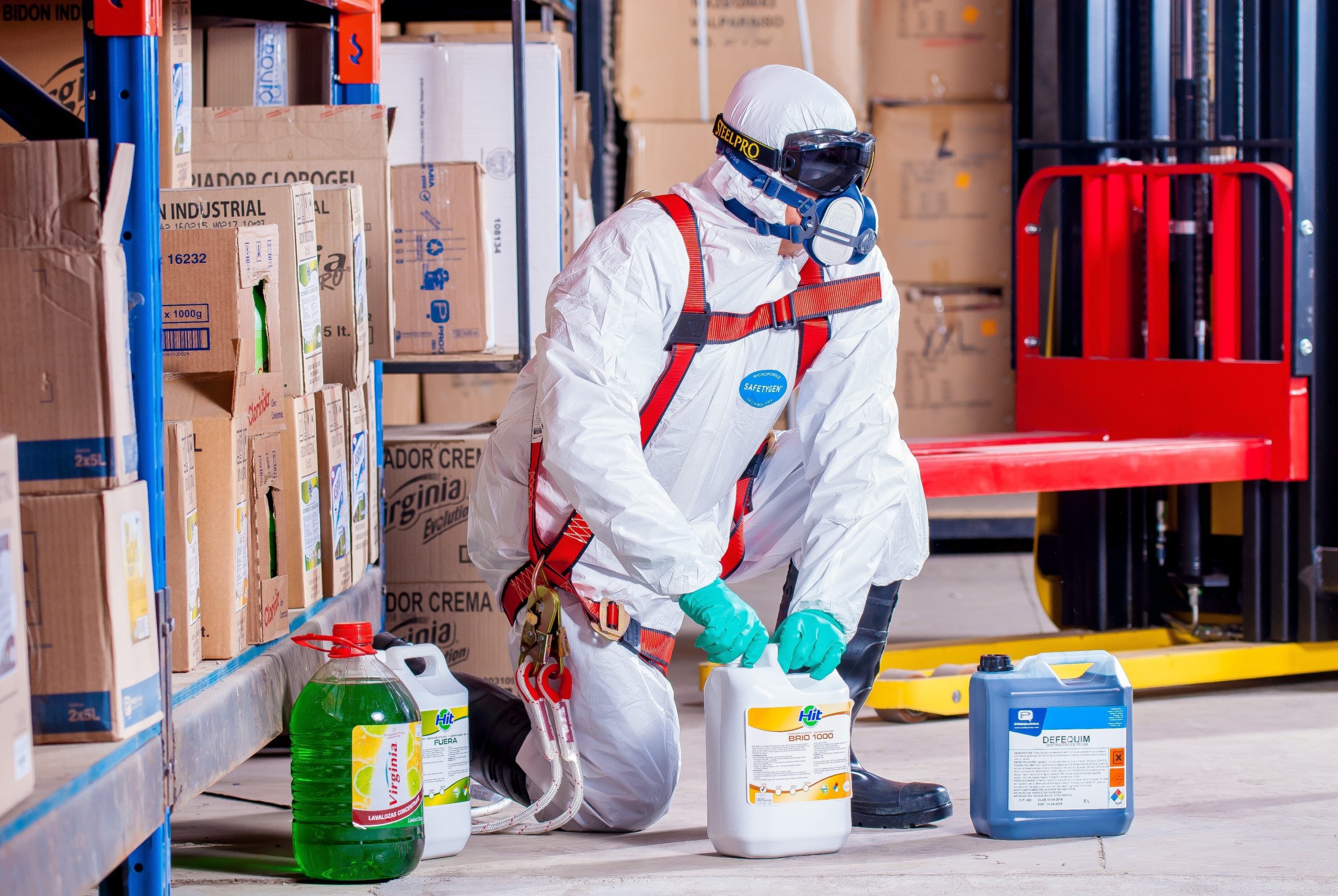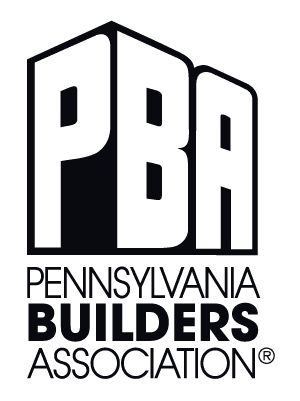
OSHA requires that you implement a PPE program to help you systematically assess the hazards in the workplace and select the appropriate PPE that will protect workers from those hazards
As part of this PPE program, you must do the following:
- Assess the workplace for hazards
- Implement engineering controls and work practices to control or eliminate these hazards to the extent feasible
- Select appropriate PPE to protect employees from hazards that cannot be eliminated or controlled through engineering controls and work practices
- Inform your employees why the PPE is necessary and when it must be worn
- Train your employees how to use and care for the selected PPE and how to recognize PPE deterioration and failure
- Require your employees to wear the selected PPE in the workplace
Winter is often a slower season for construction companies, which may offer more time to get things in order because Spring comes along. It’s the perfect time to check on your Personal Protective Equipment (PPE) and evaluate what needs to be done to meet OSHA standards and plan for any related training that your employees will need moving forward.
Assessing the Need for Personal Protective Equipment (PPE)
-
- OSHA standard 29 CFR 1910.132 requires employers to assess the workplace to determine if hazards are present, or are likely to be present, which necessitate the use of PPE
-
- Although not specifically directed to construction industry operations, this discussion will help you comply with OSHA’s general PPE requirements for the construction industry (see 29 CFR 1926.28)
-
- Consult the OSHA standards for specific requirements concerning selection and use of PPE
Protecting Employees from Workplace Hazards
-
- OSHA regulations require employers to protect their employees from workplace hazards such as machines, work procedures, and hazardous substances that can cause injury
-
- Employers must institute all feasible engineering and work practice controls to eliminate and reduce hazards before using PPE to protect against hazards
Checklist for Establishing a PPE Program
Identify steps taken to assess potential hazards in every employee’s work space and in workplace operating procedures.
Identify appropriate PPE selection criteria.
Identify how you will train employees on the use of PPE, including:
- What PPE is necessary
- When PPE is necessary
- How to properly inspect PPE for wear or damage
- How to properly put on and adjust the fit of PPE
- How to properly take off PPE
- The limitations of the PPE
- How to properly care for and store PPE
Identify how you will assess employee understanding of PPE training.
Identify how you will enforce proper PPE use.
Identify how you will provide for any required medical examinations.
Identify how and when to evaluate the PPE program.
| CHECKLIST ON NEED FOR PPE | |||
| SUGGESTED QUESTIONS | TYPICAL OPERATIONS OF CONCERN | YES | NO |
| EYES | |||
| Do your employees perform tasks, or work near employees who perform tasks, that might produce airborne dust or flying particles? | Sawing, cutting, drilling, sanding, grinding, hammering, chopping, abrasive blasting, punch press operations, etc. | ||
| Do your employees handle, or work near employees who handle, hazardous liquid chemicals or encounter blood splashes? | Pouring, mixing, painting, cleaning, syphoning, dip tank operations, dental and health care services, etc. | ||
| Are your employees’ eyes exposed to other potential physical or chemical irritants? | Battery charging, installing fiberglass insulation, compressed air or gas operations, etc. | ||
| Are your employees exposed to intense light or lasers? | Welding, cutting, laser operations, etc. | ||
| FACE | |||
| Do your employees handle, or work near employees who handle, hazardous liquid chemicals? | Pouring, mixing, painting, cleaning, syphoning, dip tank operations, etc. | ||
| Are your employees’ faces exposed to extreme heat? | Welding, pouring molten metal, smithing, baking, cooking, drying, etc. | ||
| Are your employees’ faces exposed to other potential irritants? | Cutting, sanding, grinding, hammering, chopping, pouring, mixing, painting, cleaning, syphoning, etc. | ||
| HEAD | |||
| Might tools or other objects fall from above and strike your employees on the head? | Work stations or traffic routes located under catwalks or conveyor belts, construction, trenching, utility work, etc. | ||
| Are your employees’ heads, when they stand or bend, near exposed beams, machine parts, pipes, etc.? | Construction, confined space operations, building maintenance, etc. | ||
| Do your employees work with or near exposed electrical wiring or components? | Building maintenance; utility work; construction; wiring; work on or near communications, computer, or other high tech equipment; arc or resistance welding; etc. | ||
| FEET | |||
| Might tools, heavy equipment, or other objects roll, fall onto, or strike your employees’ feet? | Construction, plumbing, smithing, building maintenance, trenching, utility work, grass cutting, etc. | ||
| Do your employees work with or near exposed electrical wiring or components? | Building maintenance; utility work; construction; wiring; work on or near communications, computer, or other high tech equipment; arc or resistance welding; etc. | ||
| Do your employees handle, or work near employees who handle, molten metal? | Welding, foundry work, casting, smithing, etc. | ||
| Do your employees work with explosives or in explosive atmospheres? | Demolition, explosives manufacturing, grain milling, spray painting, abrasive blasting, work with highly flammable materials, etc. | ||
| HANDS | |||
| Do your employees’ hands come into contact with tools or materials that might scrape, bruise, or cut? | Grinding, sanding, sawing, hammering, material handling, etc. | ||
| Do your employees handle chemicals that might irritate skin, or come into contact with blood? | Pouring, mixing, painting, cleaning, syphoning, dip tank operations, health care and dental services, etc. | ||
| Do work procedures require your employees to place their hands and arms near extreme heat? | Welding, pouring molten metal, smithing, baking, cooking, drying, etc. | ||
| Are your employees’ hands and arms placed near exposed electrical wiring or components? | Building maintenance; utility work; construction; wiring; work on or near communications, computer, or other high tech equipment; arc or resistance welding; etc. | ||
| BODY | |||
| Are your employees’ bodies exposed to irritating dust or chemical splashes? | Pouring, mixing, painting, cleaning, syphoning, dip tank operations, machining, sawing, battery charging, installing fiberglass insulation, compressed air or gas operations, etc. | ||
| Are your employees’ bodies exposed to sharp or rough surfaces? | Cutting, grinding, sanding, sawing, glazing, material handling, etc. | ||
| Are your employees’ bodies exposed to extreme heat? | Welding, pouring molten metal, smithing, baking, cooking, drying, etc. | ||
| Are your employees’ bodies exposed to acids or other hazardous substances? | Pouring, mixing, painting, cleaning, syphoning, dip tank operations, etc. | ||
| HEARING | |||
| Are your employees exposed to loud noise from machines, tools, music systems, etc.? | Machining, grinding, sanding, work near conveyors, pneumatic equipment, generators, ventilation fans, motors, punch and brake presses, etc. | ||
Checklist for Training Employees to Use and Care for Eye and Face Protection
Train your employees to know . . .
Why eye protection is necessary, i.e., the workplace hazards that threaten their eyes.
How the eye protection will protect them.
The limitations of the eye protection.
When they must wear the eye protectors.
How to put the protective eyewear on properly.
How to adjust straps and other parts for a comfortable and effective fit.
How the protective eyewear fits over or contains an employee’s corrective lenses.
How to identify signs of wear such as:
- Chipped, scratched, or scraped lenses;
- Loss of elasticity or fraying of head bands.
How to clean and disinfect the safety eyewear.
Checklist for Training Employees to Use and Care for Head Protection
Train your employees to know . . .
Why head protection is necessary, i.e., the workplace hazards that threaten their heads.
How the head protection will protect them.
The limitations of the head protection.
When they must wear the head protection.
How to wear the protective head gear properly.
How to adjust straps and other parts for a comfortable and effective fit.
How to identify signs of wear such as:
- Cracked, torn, frayed, or otherwise deteriorated suspension systems;
- Deformed, cracked, or perforated brims or shells; and
- Flaking, chalking, or loss of surface gloss.
How to clean and disinfect the hard hats you provide for them.
Checklist for Training Employees to Use and Care for Foot and Leg Protection
Train your employees to know . . .
Why foot or leg protection is necessary, i.e., the workplace hazards that threaten their feet or legs.
How the equipment you provide will protect them.
The limitations of the foot or leg protection.
When they must wear the protective leggings, guards, or shoes.
How to properly put on the protective equipment.
How to adjust straps, laces, and other parts for a comfortable and effective fit.
How to identify signs of wear such as:
- Scuffed, cracked, or lacerated uppers;
- Signs of separation between soles and uppers,
- Holes or cracks in soles or heels, or
- Metal embedded in heels or soles of electrical hazard, safety-toe shoes.
How to clean and maintain the leg and foot protection you provide for them.
Checklist for Training Employees to Use and Care for Hand and Arm Protection
Train your employees to know . . .
Why hand and arm protection is necessary, i.e., the workplace hazards that threaten their hands and arms.
How the protective gloves and sleeves will protect them.
The limitations of the protective equipment you’ve supplied.
When they must wear the gloves and sleeves.
How to properly put on the gloves and sleeves.
How to ensure a comfortable and effective fit.
How to identify signs of wear, such as:
- Cracks, scrapes, or lacerations,
- Thinning or discoloration, and
- Break through to the skin.
How to clean and disinfect the nondisposable protective gloves and sleeves.
Checklist for Training Employees to Use and Care for Body Protection
Train your employees to know . . .
Why protective clothing is necessary, i.e., the workplace hazards that threaten their bodies.
How the protective clothing will protect them.
The limitations of the body protection.
When they must wear the protective clothing.
How to properly put on the protective clothing.
How to adjust parts for a comfortable and effective fit.
How to identify signs of wear, such as:
- Rips, tears, scuffs, and
- Loss of elasticity in tight fitting parts.
How to clean and disinfect the protective clothing you provide for them.
Checklist for Training Employees to Use and Care for Hearing Protection
Train your employees to know . . .
Why hearing protection is necessary, i.e., the workplace hazards that threaten their hearing.
How the ear plugs or earmuffs will protect them.
The limitations of the hearing protection.
When they must insert or wear the hearing protectors.
How to adjust earmuff parts for a comfortable and effective fit, or form the ear plugs to fit their ears.
How special earmuffs fit over an employee’s corrective lenses.
How to clean and disinfect the hearing protection you provide for them.

